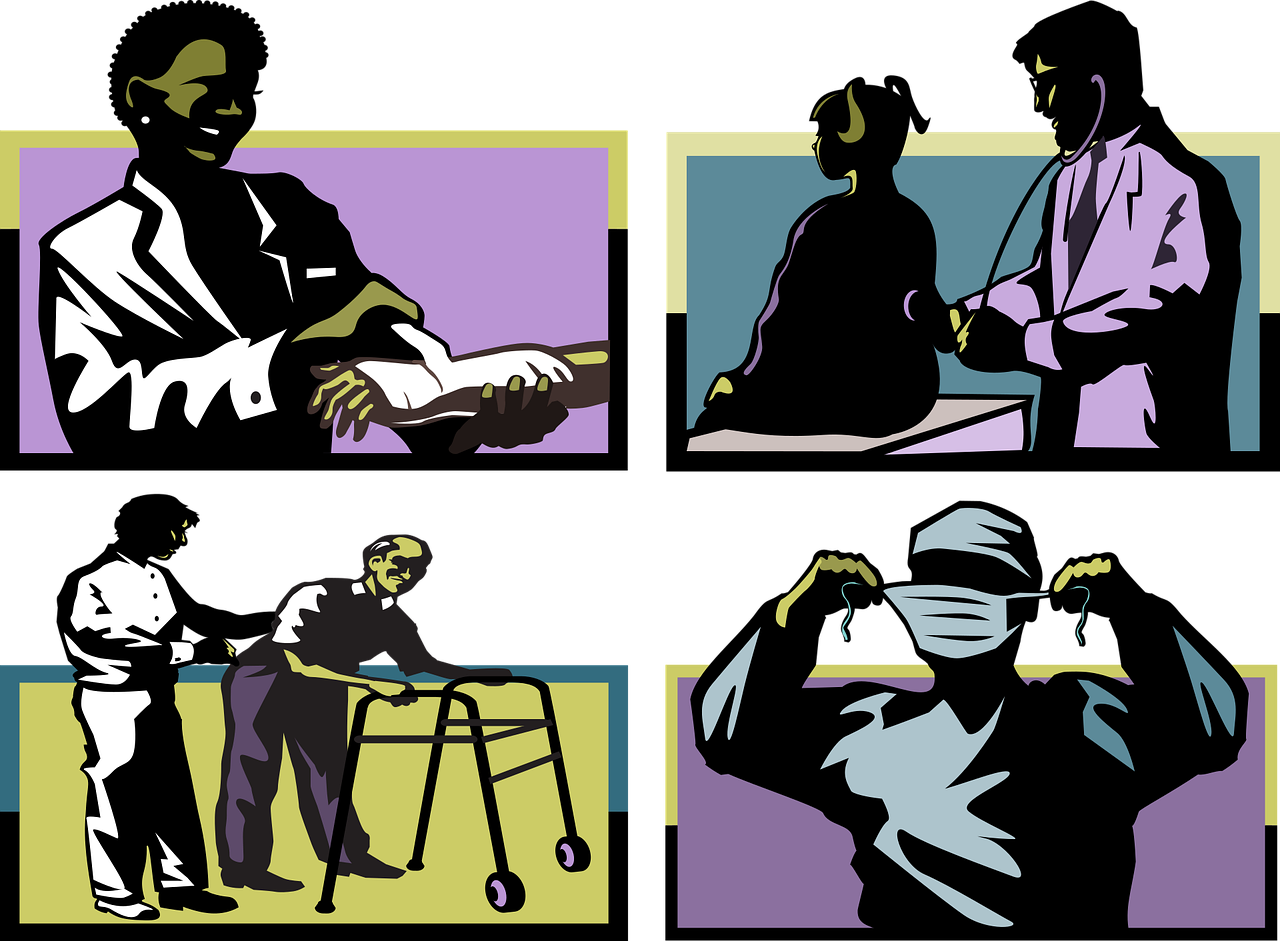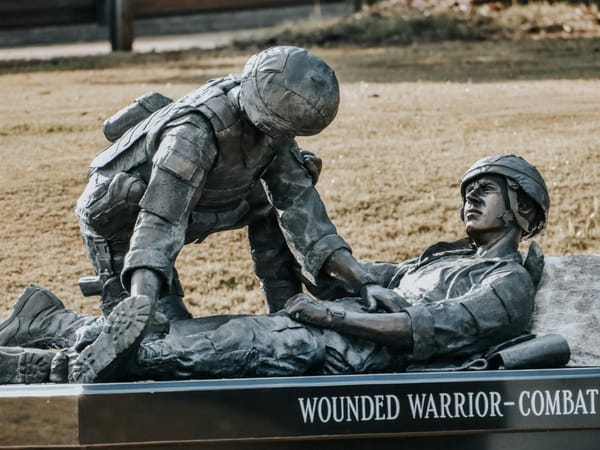How to Get Paid to Be A Caregiver For Parents
Caregivers form the single largest pillar of the long term care industry. Affordable respite care is hard to come by. The average caregiving journey lasts 6-8 years with financial consequences that can be devastating. Ways exist to receive payment for caring for a family member.

As a caregiver for a loved one, you may find yourself grappling with many caregiving responsibilities, changes, and questions. Perhaps you feel like you had no choice in the matter, or maybe it simply became your duty over time. Regardless, it's essential to know that you're not alone in your concerns.
If you're providing physical, financial, or emotional support to someone who is aging, medically complex, or has disabilities, you're considered as informal caregivers.
It's normal to have some common questions as you navigate this new role:
Do I have to call myself a caregiver?
Will I be providing medical assistance?
How can I afford this?
Who can help me?
Can I get paid to be a family caregiver?
How can I get financial assistance?
What if I hate it or can't do it?
While caregiving may be a challenging and selfless act, know that help is available. Though health professionals can offer support, friends, family, neighbors and church members should be considered to support the family caregiver. I am promoting a team approach to providing care for others. I will make my case and provide data for this this approach to care and my reasons for encouraging family caregivers to provide care with the support of others as a primary resource. I recommend that you take the Caregiver Relief New to Caregiving course, and then How to be a Patient Care advocate course to learn about all the caregiving responsibilities and challenges you will face.
We have a Public Health Crisis in the Country.
We literally have more seniors than youth. This has caused many family, friends and caregivers to leave their jobs to provide care for another. The census bureau reports that the oldest of the baby boomers will hit 80 in 2030. The youngest baby boomers will retire as they turn 65 yrs old in 2025. We used to have 7 professional caregivers for every person over the age of 80. We are now down to 4 for every person over the age of 80. And that is going to become a major issue for many family caregivers.
Direct Care Worker Shortage

We are also experiencing a direct care worker shortage. Direct care workers and Long term care leaders have struggled to resolve persistent challenges facing this workforce, including untenably low wages, limited training and career development opportunities, and high turnover.
With the U.S. population growing older and nearly half of adults and those reaching the age of 65 requiring paid LTC in their lifetime (Johnson, 2019), more direct care workers are critically needed in every local community in our country. However, these workforce challenges continue to undermine recruitment and retention efforts. The low reimbursement rates for Medicaid and Medicare has negatively impacted this very valuable workforce. One in 5 direct care workers live at or below poverty level. Most have more than one job.
Although the pace of change has been dishearteningly slow overall—due to the widespread devaluation of the direct care role coupled with political barriers to increased investment in Long Term Care. Meaning our government policy makers have done very little to add any momentum to address direct care workforce issues. Our government and disease specific organizations have provided very limited resources to provide respite care programs, instead focusing on cures for diseases. All the while creating a new condition that needs a cure. Caregiver Stress and burden.
It is real and it does kill. I am promoting a grass roots efforts to support the cure for this devastating condition- caregiver stress and burden by taking a different approach to family caregiving. A team approach to family caregiving, for short and ongoing respite breaks and paid for respite services for regular vacation benefits you would enjoy if you were employed. In my, How to Become a Patient Care Advocate course to learn more about the team approach to providing care.
Now I want to give you some statistics provided by the Family Caregiver alliance

As a caregiver, you may experience a significant loss of wages, health insurance, retirement savings, and other job benefits. In fact, many career caregivers have to make a tough choice between their job and taking care of an elderly loved one. Research shows that 37% of family caregivers quit their jobs or reduce their work hours to care for someone aged 50+, older people. This decision often exposes them to long-term financial consequences such as pension and retirement fund cuts, which can hurt their financial stability in old age.
Women caregivers in our country, are at a greater risk of losing out financially and reports show that they lose $324,044 due to caregiving compared to men at $283,716. This often results in them leaving the workforce early, leading to a loss of $142,693 in wages. If you're a single female caring for an elderly parent, you're 2.5 times more likely than non-caregivers to live in poverty in old age.
With 78% of caregivers reporting out-of-pocket expenses, and an average annual cost of $7,242, caregiving can put serious financial pressure on you and your family. On average, family caregivers are spending about one quarter (26%) of their income on caregiving activities.
At times, it may seem as though there aren't enough hours in the day. However, by taking practical steps, you can start your caregiving journey with confidence and continue to provide excellent quality care for your loved one.
Learn How to get Paid for Being a Caregiver for Parents!

It’s a time-consuming and emotionally draining job that could also become financially draining! About 57 million Americans provide care without pay to an adult family member or friend and that’s an average of almost 24 hours per week! The family caregiver national alliance also reports that the family caregiver is the single largest provider of long term care in the country. They provide over $600 billion dollars of unpaid care.
That’s why there’s a huge push for more paid leave and outright payment for family caregivers. the problem is, our long term politicians and disease specific service organizations, have known about the stress and burden of caregiving, and they have made ongoing false promises to address the issues we face.
Caregiving responsibilities your caregiving journey can last as long as 20 years. The average family caregiver journey is between 6 to 8 years. The statistics for the family caregiver are grim. 63% of caregivers become seriously ill or die from the chronic stress and burden of caregiving responsibilities. The chronic stress, lack of supportive services and programs that provide respite care has a negative impact on the family caregiver and their local communities.
Are You currently Caring for Someone?
Whether it's full or part-time care, there are certain responsibilities and tasks that come with it.These may differ from one person to another.
Informal caregivers and it starts out with doing some or all of the following things:
Shop for groceries and ensure the person has meals and company
Take them to appointments and run errands
Manage bills and other paperwork
Regularly visit in person or on the phone
Look after the person's property
Live life with them and handle their medical and safety needs
Being a caregiver is demanding and shouldn't go unnoticed. You deserve recognition, a voice, and financial support. That's why caregiver compensation needs to exist - to provide you with the financial stability you need to confidently provide consistent, reliable care.
According to a report by AARP, one in five caregivers experience high financial strain. However, there are options available for financial assistance. It can be challenging to navigate the process alone, which is why it's recommended to seek help from experienced professionals. At Caregiver relief we are here to help you.
If you're a caregiver, don't hesitate to learn more about caregiver compensation. You deserve the best possible support!
There are limited resources to get paid for caring for a family member. Your best options are through Medicaid or if your family member served in the US military. But I am going to cover other options to help support you during your caregiving journey.
Let's talk about Medicaid

Did you know that all 50 states and the District of Columbia offer self-directed Medicaid services for long-term care? These programs grant waivers that give qualified individuals the power to manage their own long-term home-care services, instead of relying on an agency. In some cases, this even means hiring a family member to provide care. However, benefits, coverage, eligibility, and rules differ from state to state, so it's important to contact your state
Medicaid program to ask about its options or to start the sign-up process. If interested in enrolling in self-directed care, there are a few steps to follow: assessment, planning, budgeting, and selection. Don't hesitate to take advantage of this service that can have benefits for both you and your loved one! For many in the middle class, qualifying for Medicaid, it means spending down.
Are you over the asset limit for Medicaid? Here are some strategies to spend down excess assets and gain eligibility without violating the 5 to 7 year look-back period!
Invest in your home by making improvements such as adding a wheelchair ramp or updating plumbing.
Repair or purchase a vehicle, which is also considered an exempt asset.
Use excess funds to pay off debt or cover medical expenses such as hearing aids or dentures.
What is a family caregiver contract?
Consider a Family Caregiver Contract to compensate a relative or close friend for providing care. Enter into a Life Care Agreement to pay a caregiver a lump sum for the senior's life expectancy. I will give you additional information on these two very valuable approaches to getting paid for providing quality care to your aging loved ones.
The Military Veteran Benefits

As a military veteran, you have access to four different plans that may help cover the cost of long-term care. I am going to briefly explain these programs. Be aware that anytime you deal the government, the process is painful and the time you may get a response on approval can be as long as 2 years. I have had many family caregivers go through this process, only to have the aging veteran die before the benefits started. My suggestion to you, is, keep great notes, stay organized, get the names and telephone numbers or extensions of those you speak with. I also recommend that you call your state congressional leaders- senators and house members.
Write them, tell them your struggles and ask for assistance to this process. If we don't make our government policy makers aware of the struggles we face to get approval for resources our veterans are entitled to because of their selfless service to our community and our country. I share this info not to discourage you, but to make sure you know this is a challenging process. Be mentally and emotionally prepared to deal with overworked government bureaucrats.
The Veteran Directed Care Programs
The Veteran Directed Care Program allows you to manage your own services and supports, in the comfort of your own home or a loved one's home. A flexible monthly budget gives you the freedom to choose which goods and services best suit your individual needs, including the option to select any physically and mentally capable family member as your caregiver. To determine eligibility and get started, reach out to your nearest VA medical center.
Aid and Attendance Benefits Supplement
Aid and Attendance Benefits supplement your military pension, to help cover the cost of a caregiver for everyday personal functions such as bathing, dressing, and eating. Surviving spouses of qualifying veterans may also be eligible. To apply, complete the A&A application form and provide an explanation from your attending doctor as to why a caregiver is needed.
Housebound Benefits
Housebound benefits are available for veterans who receive a military pension, and are as well being substantially confined to their immediate premises due to permanent disability. To apply, follow the same process as for A&A benefits.
The Program of Comprehensive Assistance for Family Caregivers

The Program of Comprehensive Assistance for Family Caregivers provides a monthly stipend to family members who serve as caregivers for veterans needing assistance with everyday activities. To qualify, the veteran must be enrolled in VA health services, have a disability rating of 70 percent or higher, and the caregiver must be 18 or older and a family member. Benefits include health and mental health services, comprehensive training, and up to 30 days of respite care per year.
Additionally, if you're aging family member is mentally sound and have sufficient financial resources, they can can compensate a family member for the same services a professional home health care worker would provide.
For more information on any of these options, visit the VA Caregiver Support page or call their hotline at 855-260-3274. As a veteran, you deserve access to the support and care you need.
Long Term Care Insurance

Does your family member have a long-term care insurance policy? Some policies offer compensation for informal caregivers like yourself! Additionally, keep in mind that while the policy may cover certain home health and personal care expenses, it's important to check if it extends to paying spouses or family members living in the home. Don't hesitate to speak to your loved one's insurance agent or company for more information and be sure to request written confirmation of benefits. This is important because there may be expectations by the policy on notifications on when your family member is admitted to the hospital.
Cost of Living Rider
Another thing to consider to ask about is if your loved one purchased a cost of living rider? These are very expensive with yearly increases. If there was no cost of living rider, the plan may have very low reimbursement rates. Meaning, that if the plan was purchased 20 to 40 years ago, those rates will be not be close to today's costs of home care. I've had so many clients experience such disappointment when they realized this fact.
Let's Talk about a Life Care Agreement/ Family Caregiver Contract

Some key components to a Life Care agreement should include
Keep in mind that payments can be made in forms other than cash, including the transfer of property.
Calculating lump sum payments requires factoring in the individual's life expectancy. It's recommended that you enlist professional assistance to ensure that your agreement is fair and reasonable.
It's important to include a modification clause that requires all changes to be agreed upon in writing, as well as a termination clause that allows either party to end the agreement in writing if needed. Vacation coverage, regular days off as well as the limits and boundaries of the care provided in the future should be put in writing.
Know your Limits and Boundaries

Family caregivers go into this role with full hearts and good intentions. They do not think about the challenges they may face with older adults- such as challenging behaviors due to dementia. A person with dementia may have sexually inappropriate behaviors, become aggressive, wander or become physically abusive. An aging senior will eventually become incontinent of bowel and bladder and have mobility challenges that will require lifting to move them from a bed to a chair etc. A family caregiver needs to take time to think of what your limits and boundaries are, and put them in writing in this contract.
When done correctly, a life care agreement can help an elderly person reduce their income or assets in order to become eligible for Medicaid-funded nursing home care, while also allowing them to keep their financial resources within their family. Keep in mind that Medicaid has income and asset restrictions, and a 5-year look back period to examine financial transactions. A properly drafted life care agreement can prove that payments for care were a valid expense and prevent violations of the look back period. This type of agreement also keeps the uninvolved family members and siblings from suing for funds or property. And trust me, this happens more than you know. Be aware, you cannot go back and put an agreement in place retroactively. That is why I encourage every family caregiver to put an agreement in place when they start their caregiving journey.
You might also like this article:












